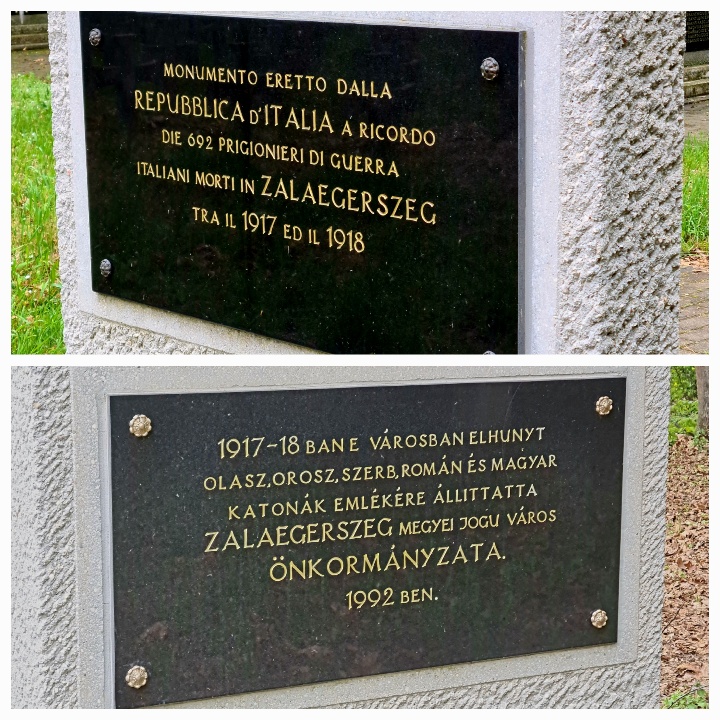

In the 1989 film Field of Dreams, while Ray Kinsella (Kevin Costner) is walking through a cornfield, he hears someone whisper, ‘If you build it, he will come.’ He figured out that the IT was a baseball park.
In Zalaegerszeg, in the early 1900s in the throes of WWI, the hospital was full of wounded soldiers. Able-bodied men were in short supply. And the fields weren’t producing. The Ministry of Agriculture was asked to set up a POW camp, presumably so that captured soldiers could work the fields.
Ambitions were high. When the Bratislava Military District Command was asked to hand over a plot of land, he chose Egervári u. 16, where 50 barracks were built to house 20 000 prisoners. Only 3600 showed up. Not quite a full house. They all didn’t come.
From what I can gather, the camp was built around 1915 and known locally as the Wire Village. And then, in 1920, it was reborn as an internment camp.
The former camp is now a cemetery. The inscription is in both Hungarian and Italian – the Hungarian text describes it as a World War I Heroes Cemetery. The Italian simply a military cemetery.

Here, the bodies of 1,656 soldiers are interred. I read that there are 720 individual graves I didn’t count them. I would have thought there were a lot more, considering that the plaque seems to say that there are 692 Italians alone.

The Italian markers are numbered crosses.


Those of Russian, Serbian, Romanian, and Hungarian soldiers and Jewish POWs are marked with helmets. They, too, have numbers. On the back.

The unknown heroic dead are buried in a mass grave, I think underneath the obelisk


The cemetery has undergone a number of facelifts, the most recent in 2014 when a three-year project supported by the Italian embassy began, It was completed in May 2017.
It’s a lovely spot and heartwarming to see the place renovated and cared for. The lads deserve as much and more.
